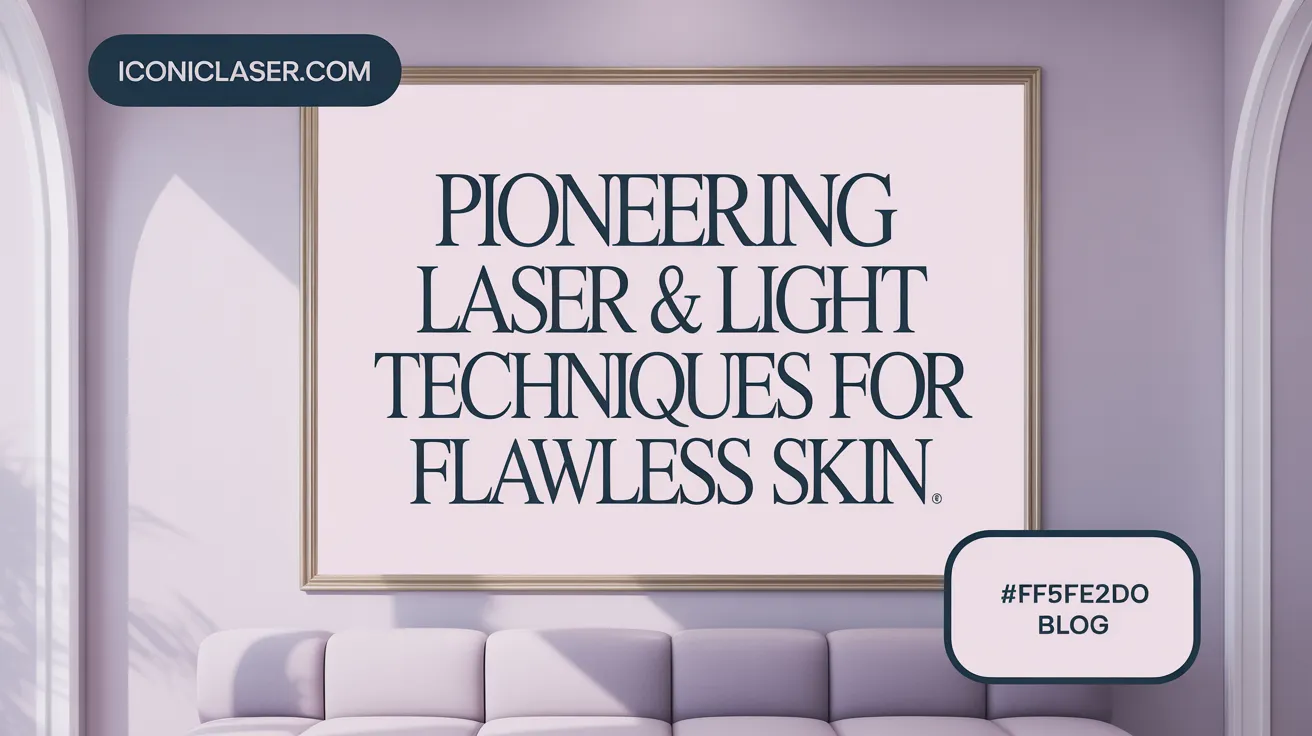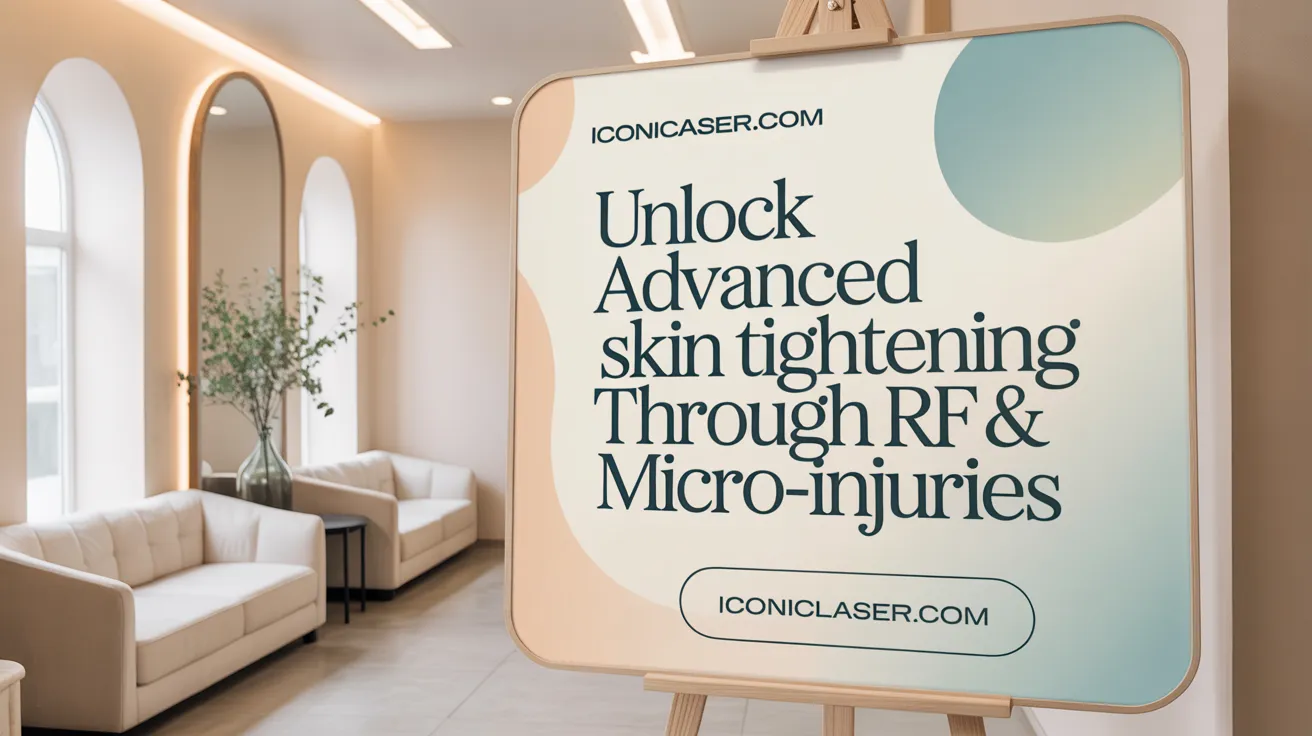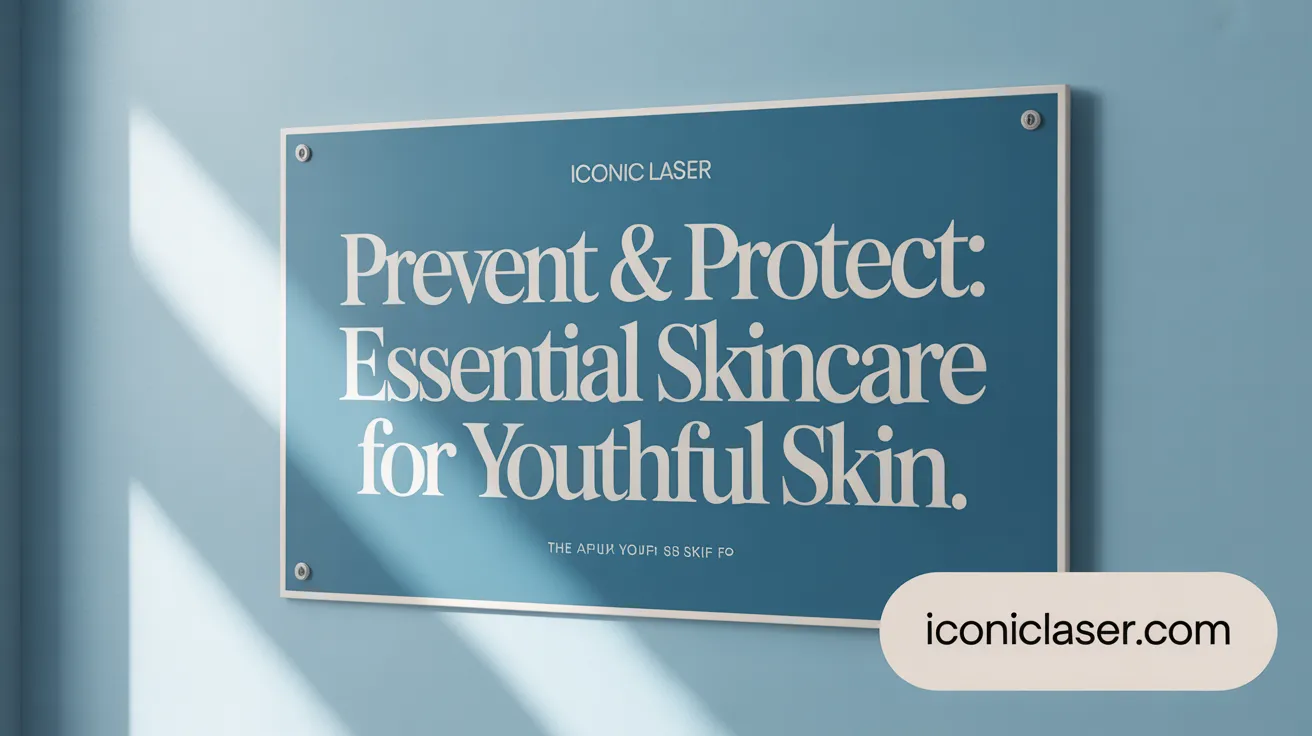Embracing Innovation in Skin Rejuvenation
The quest for youthful, radiant skin continues to inspire groundbreaking advances in dermatology and aesthetic medicine. Non-invasive and minimally invasive technologies have revolutionized how we approach skin rejuvenation, moving beyond traditional methods to embrace highly personalized, effective, and safe treatments. This article explores the latest advances that promise to restore skin vitality, reduce signs of aging, and enhance natural beauty, all while minimizing downtime and optimizing outcomes.
Non-Surgical Treatments Revolutionizing Skin Rejuvenation
What are the roles of Botox and dermal fillers in skin rejuvenation?
Botox and dermal fillers are foundational in modern non-surgical skin rejuvenation. Botox works by relaxing the facial muscles responsible for dynamic wrinkles treatment, including crow’s feet and frown lines, and forehead lines smoothing. This relaxation smooths these expression lines for a fresher, younger look, with results lasting between three to six months.
Dermal fillers, on the other hand, restore volume lost due to aging. They enhance and contour areas such as the cheeks, lips, and under-eyes. Fillers like Juvederm, Restylane, and Sculptra offer improvements lasting from six months up to two years, depending on the product used. Their volumizing effect combats sagging and deep folds, complementing the wrinkle-smoothing benefits of Botox.
How do combination therapies advance skin rejuvenation?
Personalized treatment plans often combine neuromodulators like Botox with dermal fillers to comprehensively address multiple aging signs. This synergy allows for relaxing wrinkles while simultaneously restoring volume and facial contours. In addition, combination treatments may include chemical peels or microneedling, enhancing skin texture and stimulating collagen production for a rejuvenated complexion.
What are some minimally invasive options for non-surgical rejuvenation?
Beyond Botox and fillers, minimally invasive treatments include microneedling, chemical peels, laser resurfacing, and platelet-rich plasma (PRP) therapies. For instance, microneedling with radiofrequency energy combines controlled micro-injuries with radiofrequency energy to promote collagen and elastin production, tightening and smoothing skin. Chemical peels exfoliate damaged skin layers, improving tone and pigmentation. These treatments, often performed in-clinic with minimal downtime, provide effective yet gentle skin rejuvenation alternatives without surgery.
Innovations in Laser and Light-Based Skin Therapies

How have laser technologies advanced in skin rejuvenation?
Laser treatments for skin rejuvenation have undergone significant advancements, making them more precise and less invasive. Fractional laser technology deliver energy in tiny, targeted zones rather than over the entire skin surface. This focused approach stimulates collagen production while minimizing downtime. Fractional technology effectively treats wrinkles, fine lines, acne scars, and sun damage by accelerating new skin growth.
Hybrid fractional lasers represent an evolution by combining ablative lasers, which remove the outer skin layers, with non-ablative lasers that heat deeper skin to boost collagen without extensive recovery time. This dual action provides comprehensive rejuvenation with fewer side effects.
CO2 lasers remain a powerful resurfacing tool, ablating damaged skin precisely to improve texture, tone, and clarity. They are especially effective for deeper wrinkles and significant sun damage. Complementing these, picosecond lasers offer ultra-short bursts of energy to shatter pigment deposits and stimulate repair, benefiting texture and discoloration.
Light-based therapies such as IPL photorejuvenation and AviClear therapy for skin tone use broad-spectrum or targeted wavelengths to address pigmentation irregularities and improve skin tone. These treatments typically involve minimal or no downtime, making them popular options for skin brightening and discoloration correction.
Safety advancements for diverse skin types
Recent technological and procedural improvements have greatly enhanced safety for all skin tones, particularly ethnic skin. Newer protocols and laser settings reduce the risks of hyperpigmentation, scarring, and adverse reactions that were more common with older laser systems. Dermatologists now tailor treatments carefully, considering individual skin characteristics to achieve effective, natural results while minimizing complications.
Microneedling and Radiofrequency: Synergistic Collagen Boosting

What advantages do microneedling and radiofrequency combinations offer?
Microneedling alone benefits skin by creating tiny injuries that trigger natural collagen production, essential for improving fine lines, wrinkles, and skin texture. When combined with microneedling with radiofrequency energy, this effect intensifies as RF stimulates both collagen and elastin deeper in the skin layers. This combination enhances skin tightening techniques 2024 and rejuvenation more effectively than microneedling alone.
How do EXION and Morpheus8 compare?
EXION and Morpheus8 are two leading RF microneedling devices:
- EXION provides precise control over treatment depth and energy levels. This makes it suitable for sensitive or delicate facial areas, aiming to minimize discomfort while still promoting collagen renewal.
- Morpheus8 uses gold-plated needles to deliver RF energy deeper into the skin. It is ideal for treating significant laxity and textural unevenness, not just on the face but also on body tissues.
Both devices improve skin texture and tone improvement, reduce fine lines and wrinkles, and promote a youthful appearance with minimal downtime.
How do they stimulate collagen and elastin?
The microneedles create controlled micro-injuries that prompt the skin to heal by producing collagen. Simultaneously, radiofrequency energy heats the underlying layers, accelerating collagen and elastin synthesis. Elastin helps maintain skin elasticity, preventing sagging. Together, this dual stimulation results in firmer, smoother, and brighter skin.
This combination therapy for skin is a powerful option for those seeking natural-looking anti-aging results through minimally invasive anti-aging procedures guided by experienced dermatologists.
Emerging Regenerative Therapies and Biotechnologies
How are regenerative therapies advancing skin rejuvenation?
Regenerative medicine is reshaping how we approach skin rejuvenation by harnessing the body's natural healing processes. One standout treatment is platelet-rich plasma (PRP) therapies, also known as the vampire facelift procedure. PRP uses the patient’s own blood components to boost collagen production, helping improve skin texture and diminish scars and fine lines. This technique offers a natural way to renew skin without introducing foreign substances.
Another exciting development involves exosome therapy for skin—tiny vesicles packed with growth factors and proteins. These act as messengers to promote cellular regeneration, offering a promising route to a more youthful complexion by supporting the skin’s natural repair mechanisms.
Mesotherapy injections deliver targeted doses of vitamins and minerals directly into the skin. When combined with microneedling, this method enhances the delivery and effectiveness of these nutrients while stimulating collagen formation. This combined approach tackles fine lines, wrinkles, hyperpigmentation, and uneven texture effectively.
Smart topical agents are also gaining traction. These products incorporate biomimetic peptides that mimic natural skin processes and use advanced smart delivery systems to improve skin renewal and penetration, making everyday skincare routines more potent.
Together, these regenerative therapies provide comprehensive, minimally invasive anti-aging options for lasting skin revitalization.
Enhanced Delivery Systems: Ultrasound and Nanotechnology

What are the benefits of ultrasound technologies in skin treatment?
Recent advances in high-frequency ultrasound skin therapy have introduced a breakthrough method for non-invasive skin rejuvenation technology by enhancing the delivery of key skincare ingredients. This non-invasive technique uses ultrasound waves to temporarily destabilize the outer skin layer, known as the stratum corneum skin absorption enhancement, effectively creating tiny channels.
These microscopic pathways facilitate the deeper penetration of dermo-cosmetics like hyaluronic acid delivery to epidermis directly into the epidermis. Hyaluronic acid is renowned for its powerful hydrating properties, which help reduce fine lines, wrinkles, and improve overall skin elasticity and firmness.
The ultrasound used in this technology is generated through nanosecond laser pulses that transform light into high-pulse pressure waves. This innovative mechanism gently and painlessly opens the skin’s surface without causing damage or discomfort, enhancing the absorption of anti-aging ingredients overview.
By increasing the efficiency of topical treatments, this approach promotes youthful, radiant skin with minimal downtime and risk. The integration of ultrasound-assisted delivery systems symbolizes a promising direction in dermatology, marrying cutting-edge nanotechnology with traditional skincare to boost hydration, smoothness, and skin tone.
This technology’s painless nature and enhanced efficacy make it an appealing option for those seeking effective, non-invasive skin rejuvenation.
Chemical Peels and Skin Resurfacing: Targeting Pigmentation and Texture
How do chemical peels and resurfacing enhance youthful skin?
Chemical peels work by applying special solutions to exfoliate and remove the outer layers of damaged skin. This stimulates new cell growth, significantly improving the appearance of wrinkles, pigmentation irregularities, and scars. There are various types of chemical peels, ranging from light peels for gentle exfoliation to deep peels targeting more severe skin issues, allowing treatments to be tailored to individual needs.
Types of chemical peels
Chemical peels are generally classified as:
- Light peels: Use mild acids like alpha hydroxy acids (AHAs) for superficial exfoliation.
- Medium peels: Utilize stronger acids such as trichloroacetic acid (TCA) to reach deeper skin layers.
- Deep peels: Employ phenol or high-concentration TCA for significant skin damage repair, often requiring longer recovery.
Laser skin resurfacing modalities
Laser resurfacing treatments are advanced methods to rejuvenate skin by stimulating collagen and improving texture and tone:
- Ablative lasers: Remove outer skin layers for more dramatic results but with longer downtime.
- Non-ablative fractional lasers: Heat deeper layers without damaging the surface, promoting collagen growth with minimal recovery.
- Hybrid fractional lasers: Combine ablative and non-ablative benefits for comprehensive results. Learn more about laser advancements in skin rejuvenation.
Microdermabrasion and dermabrasion roles
Mechanical exfoliation techniques complement chemical and laser treatments:
- Microdermabrasion: A gentle method that exfoliates the outermost skin to enhance smoothness and brightness.
- Dermabrasion: A more intensive procedure targeting deeper skin layers to reduce scars and wrinkles. Additional details can be found in the skin resurfacing guide.
Treatment customization and provider expertise
Choosing the right resurfacing or peel depends on skin type, concerns, and goals. Treatments should be performed or supervised by board-certified dermatologists or cosmetic surgeons to ensure safety and optimal outcomes. Personalized plans often combine different modalities for best rejuvenation results.
Chemical peels and skin resurfacing are effective ways to improve skin pigmentation and texture, renewing a youthful and radiant complexion with tailored, expert care. For comprehensive options on Younger-Looking Skin Solutions and Non-Surgical Skin Rejuvenation, professional consultation is recommended.
Comprehensive Skincare and Preventive Strategies for Aging Skin

What foundational skincare practices support youthful skin?
Maintaining youthful skin depends on consistent, foundational care alongside professional treatments. Key daily practices include gentle cleansing to remove impurities without irritation, regular moisturizing to maintain skin hydration, and rigorous sun protection using broad-spectrum SPF 30 or higher to prevent sun damage and age spots.
The importance of sun protection
Sun exposure accelerates aging by breaking down collagen and elastin, causing wrinkles and pigmentation issues. Protecting skin from UV rays helps preserve its integrity and slows the development of age-related changes. Learn more about sun protection tips and minimizing age spots.
Role of antioxidants and retinoids in anti-aging
Incorporating antioxidants such as vitamin C supports skin by neutralizing free radicals, brightening the complexion, and diminishing dark spots. Retinoids stimulate collagen and elastin production, improve skin thickness, and promote cell turnover, which smooths wrinkles and refines texture.
Maintaining results after clinical treatments
To sustain the benefits of treatments like Botox, fillers, chemical peels, and laser resurfacing, patients should adhere to recommended skincare routines. This includes ongoing sun protection and use of antioxidant-rich and retinoid products to support collagen and skin renewal processes, helping to prolong youthful appearance and delay future signs of aging.
The Future of Skin Rejuvenation is Here
Advancements in dermatological science and aesthetic technology are reshaping the landscape of skin rejuvenation, offering an array of personalized, cutting-edge, and minimally invasive options. From sophisticated laser systems and regenerative therapies to innovative delivery methods and foundational skincare, individuals can achieve natural-looking, youthful skin with improved safety and convenience. As this field continues to evolve in 2024 and beyond, consulting experienced dermatologists to tailor treatments is essential for optimal results. Embracing these innovations empowers everyone to reveal their most radiant and youthful appearance.
